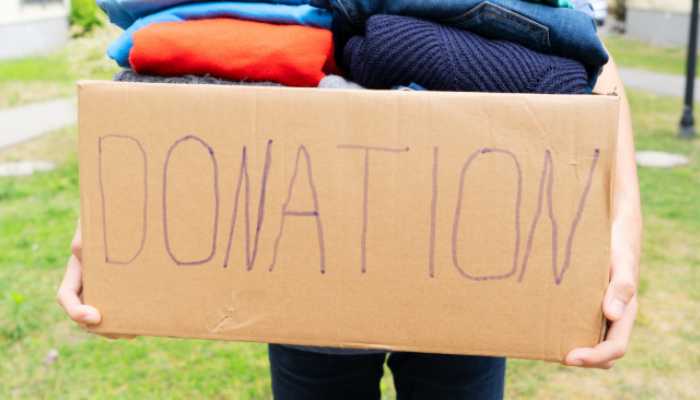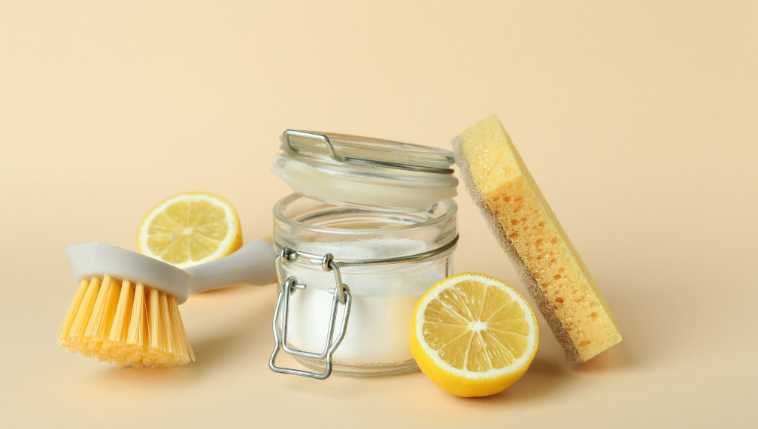5 Simple Eco-Friendly Spring Cleaning Tips for a Healthier Home
Posted March 1, 2024As the days finally begin to grow longer and the weather warms up, many people get the urge to purge. After being cooped up with your belongings all winter, you may begin to reevaluate which items no longer serve a purpose in your life. If you live in a cold climate, it’s also typical to have your windows securely closed from November to March, so once spring arrives, it feels like the perfect time to air out your home and dive headfirst into some spring cleaning.
Spring cleaning is great for decluttering and refreshing your space and mind, but it can also create unnecessary waste. We accumulate a lot of things, and we don’t always know what to do with them. Instead of throwing away our clothing, décor, or home goods that you no longer use, it’s better to repurpose, recycle, or donate them.
It is possible to tackle your spring cleaning in a healthier and more sustainable way. Before you grab the commercial cleaning products and trash bin, read our five tips for a more environmentally friendly spring cleaning experience.
1. Reduce waste by donating, selling, or giving away previously loved clothing and household items.
Before you throw away that vintage cardigan or old blender, ask a friend or family member if they could use it. If not, find a local charitable organization drop-off box and donate the items. If you’re looking to make some extra cash, you could try selling your items online or at a local second-hand clothing store.
If your clothing is beyond repair, see if you can find a textile-recycling program in your area. These programs take your ripped or marred clothing and turn it into new garments. You can also compost clothing made from organic materials like cotton, wool, or linen. The last thing you want to do is throw this material in your trash can. When clothing ends up in a landfill, it can take over 200 years to decompose, and as it does, it generates methane gas and leaches toxic chemicals and dyes into the groundwater and soil.

2. Make your own non-toxic cleaning products.
Many household cleaning products—including soaps, detergents, polishes, and carpet cleaners —contain harsh chemicals which can be harmful to your health. The ingredients in these products can irritate your eyes, trigger headaches, and cause respiratory problems. Additionally, some cleaning products contain ingredients that are toxic, hazardous, non-biodegradable, and from non-renewable resources like petroleum, which can adversely affect the environment.
While it may take a little more effort, making natural cleaning products at home can save you money and help keep you, your family, and the environment happy and healthy. Simple ingredients like vinegar, lemon, and baking soda are tough enough to tackle your spring cleaning project.
You can find more tips on creating natural cleaning products here.

3. Use reusable cloths instead of paper towels.
Once you begin a cleaning project, it’s easy to go through an entire roll of paper towels without blinking, ultimately creating a lot of waste. If you’re not using cleaning products with harsh chemicals, you can shred and compost the paper towel; otherwise, it’s best to keep the used paper towels out of your compost bin.
Instead of disposal toweling, try using reusable cloths for cleaning. If you have old t-shirts you no longer want, you can cut them up to use as cleaning rags.
4. Conserve water.
According to American Cleaning Institute, the average household uses around 88,000 gallons of water per year. Think about all of the things you use water for every day like brushing your teeth, showering, hand washing, washing the dishes, flushing the toilet, washing laundry—it can really add up!
Here are some simple ways to reduce your water usage while cleaning.
- Make sure you don’t let the faucet needlessly run. If you’re filling multiple buckets, turn it off between uses.
- When washing by hand, scrape food residue off of the dishes before washing. You can also save water by filling two sinks—one with hot soapy water and another with cold water for a quick rinse. Remember to clean your dishes using the amount of detergent recommended by the manufacturer. Doing this will eliminate extra rinsing time.
- While it may seem counterintuitive, using a dishwasher can help you save water. Typically, you will use more water if you wash dishes by hand.
- Only run the washing machine if you have a full load of laundry.
5. Recycle or compost old papers.
Newspapers, bills, and advertising flyers tend to pile up around the house over time. A recent study by the Environmental Protection Agency reported that paper products take up approximately 25% of landfill space. You can help divert some of this organic material from landfills by composting or recycling it.
Both recycling and composting have their benefits. It takes 70% less energy and water to recycle paper than it does to create new paper from trees, so by keeping material in the recycling stream, you’re helping the environment. If you have an excess of newspaper or other paper products, you can shred them and add them to your compost pile for a boost of carbon. Either way, you are helping to reduce waste and lower methane emissions from landfills.
Make sure you shred any paperwork with sensitive information before recycling or composting it. Shredding paper and cardboard before composting also helps to speed up decomposition and allow airflow.
Bonus Tips:
- Brew yourself a cup of your favorite coffee and listen to music that motivates you to move! Don’t forget to compost your coffee grounds.

